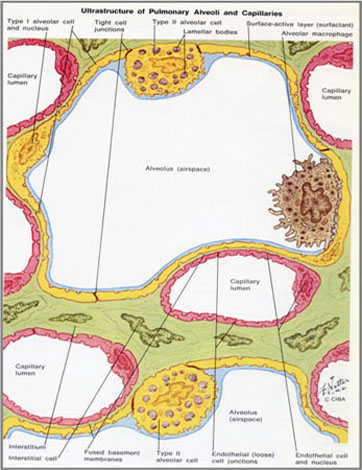
Alveolar macrophages.
Less well phagocyted by the macrophages, some nanoparticles, in particular individual particles (nonaggregate or nonagglomerate), could reside longer in the lung, which would facilitate their entry into the cells of the respiratory epithelium and their transfer to deeper layers (interstitial spaces, bloodstream) [C. Buzea et al., Biointerphases 2 (2007) 17-172 / G. OberdÖrster et al., Journal of Nanoscience and Nanotechnology 9 (2009) 4996-5007 / H.M. Braakhuis et al., Particle and Fibre Toxicology 11 (2014) ].
Some articles focus on mesothelioma observation via MWNTC absorption, geometrically rigid nano-objects, the nearest of asbestos fibers [A. Takagi et al., The Journal of Toxicological Sciences 33 (2008) 105-116 / K. Donaldsonet al., Particle and Fibre Toxicology 7 (2010)].
Other nanoparticles, particularly Mn oxide, could go back up the olfactory nerve endings of the nasal passages and directly reach the brain [J. Wang et al., Toxicology 254 (2008) 82-90 / H. Shiet al., Particle and Fibre Toxicology 10 (2013)].


